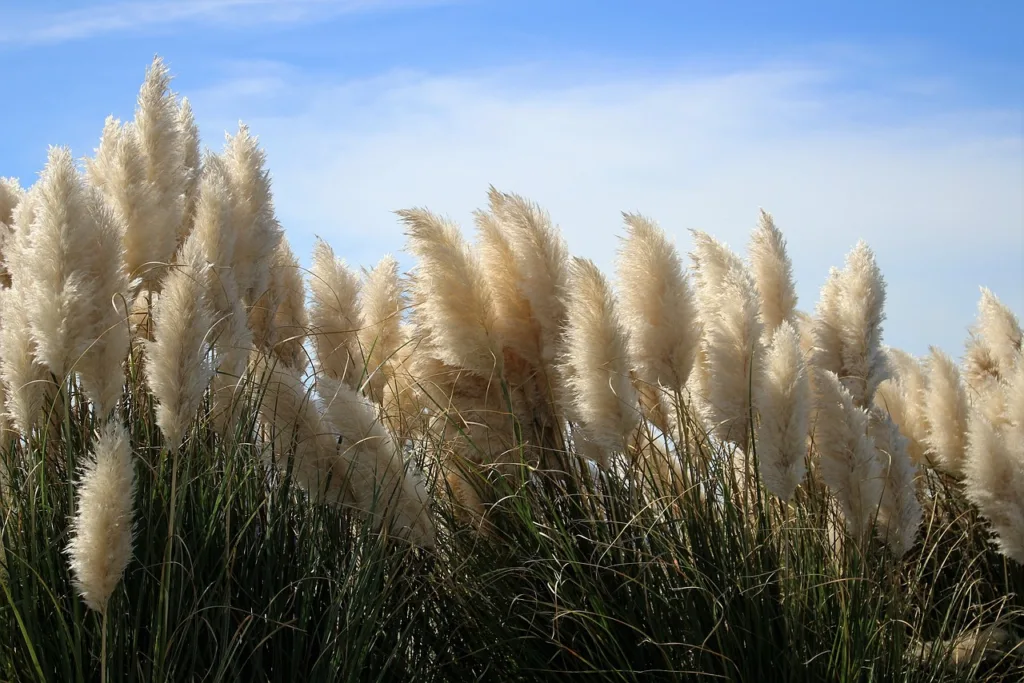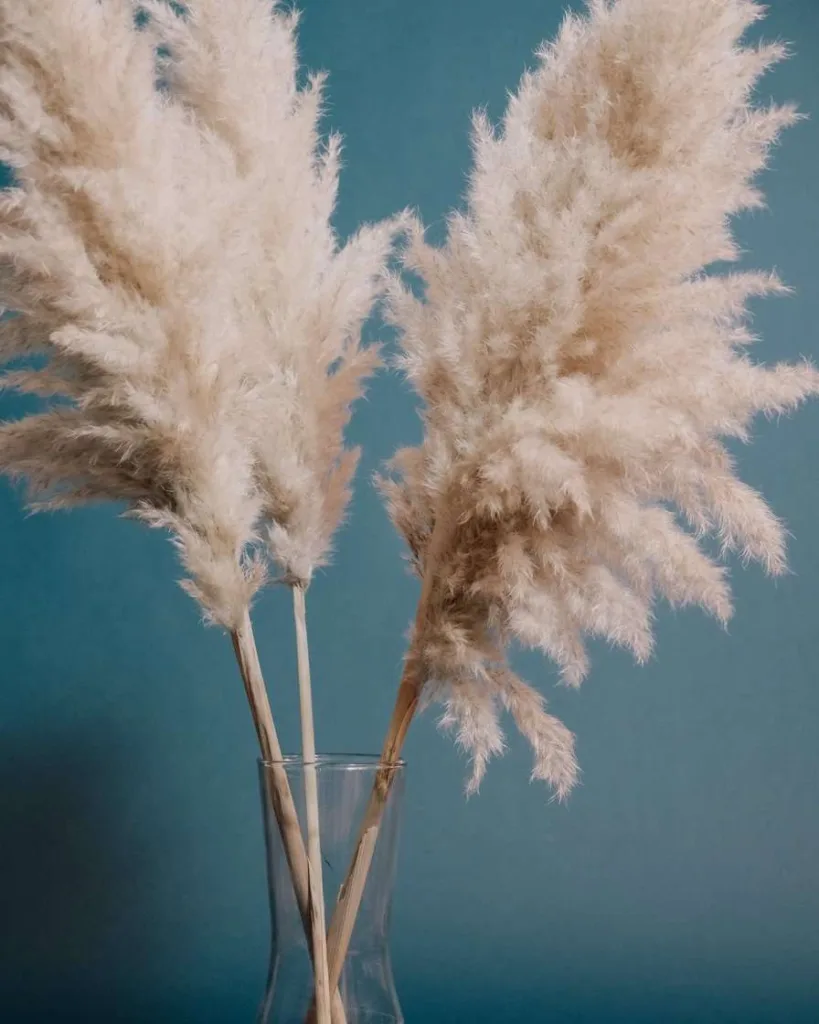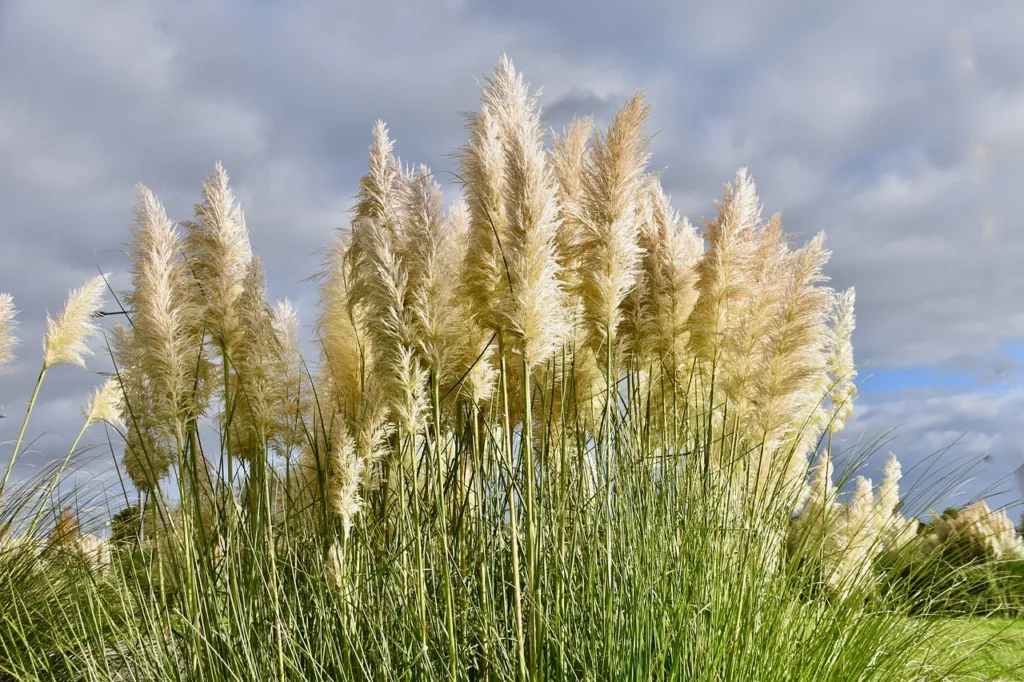Pampas grass, scientifically known as Cortaderia selloana, is a perennial grass native to the vast Pampas regions of South America, including Argentina, Brazil, and Uruguay.
With variations like pink pampas grass and purple pampas grass, it offers a contemporary twist to traditional landscapes.
Pampas grass is a stunning ornamental plant known for its feathery plumes and graceful appearance. It adds a touch of elegance and natural beauty to any garden or landscape.
Growing and caring for pampas grass might seem like a daunting task, but with the right knowledge and guidelines, anyone can successfully cultivate this marvelous plant.
| Characteristic | Description |
|---|---|
| Scientific Name | Cortaderia selloana |
| Common Names | Pampas Grass, Uruguayan Pampas Grass, South American Pampas Grass |
| Family | Poaceae (Grass family) |
| Native to | Southern South America (Argentina, Uruguay, Brazil) |
| Appearance | Tall, feathery plumes on long stalks; typically white or pink |
| Height | Can reach up to 10 feet or more |
| Blooming Season | Late summer to early fall |
| Uses | Ornamental landscaping, dried flower arrangements |
| Invasive Potential | Considered invasive in some regions due to its rapid growth |
| Care Requirements | Full sun, well-drained soil, occasional pruning for maintenance |
| Hardiness Zones | Typically zones 7-11, but may vary depending on the variety |
| Environmental Impact | Can outcompete native vegetation in certain ecosystems |
| Cultural Significance | Symbol of ornamental beauty, commonly used in interior design |
| Cautions | Sharp leaves can cause skin irritation; may be invasive in some areas |
| Propagation | By seeds or division of established clumps |
| Maintenance | Cut back in late winter or early spring to encourage new growth |
Types of Pampas Grass
- Cortaderia selloana (Classic White Pampas Grass):
- The most common and widely recognized variety.
- Features large, feathery white plumes that can reach impressive heights.
- Adds a touch of elegance to landscapes and decor.
- Pink Pampas Grass:
- Soft, pink-hued plumes characterize this variety.
- Offers a more delicate and feminine appearance compared to the classic white variety.
- A popular choice for creating romantic and whimsical arrangements.
- Purple Pampas Grass:
- Known for its regal and deep purple plumes.
- Adds a vibrant color option to landscapes and arrangements.
- Complements other colors in gardens and bouquets.
The Perfect Location of Pampas Grass
Before diving into the details of how to grow and care for pampas grass, it’s vital to choose the right location for your plant. Pampas grass thrives in areas with full sun exposure, as it requires at least six hours of direct sunlight daily.
Additionally, it prefers well-draining soil to prevent root rot and ensure healthy growth. When selecting a spot, make sure there is enough space for the plant to spread out, as pampas grass can grow quite large.
| key characteristics: Plumes: One of the defining characteristics of pampas grass is its large, silky plumes that can reach impressive heights, often between 6 to 10 feet (1.8 to 3 m). These feathers, resembling ears of wheat, emerge in late summer and may last through fall and winter. Leaves: Pampas grass has long, arched leaves with serrated edges. The leaves form dense clumps that contribute to the overall visual appeal of the plant. Varieties: While the classic white pampas grass is the most well-known, some varieties show alternative colors, including pink pampas grass and purple pampas grass. These colorful varieties add a delightful and contemporary touch to landscapes. |

How to Planting Pampas Grass from Seed
Once you have determined the ideal location, it’s time to plant your pampas grass. Here are some steps to ensure a successful planting process:
- Prepare the soil: Dig a hole that is two times the width and depth of the plant’s root ball. Loosen the soil at the bottom of the hole to encourage root growth.
- Amend the soil: If your soil is heavy clay or lacking in nutrients, consider incorporating organic matter such as compost or well-rotted manure into the soil to improve its quality.
- Plant Seed the pampas grass: Place the root ball in the hole, ensuring that the crown of the plant (where the roots meet the stems) is level with the soil surface. Backfill the hole with soil, gently pressing it down to eliminate any air pockets.
- Water thoroughly: After planting, water the pampas grass thoroughly to help settle the soil around the roots. Provide regular watering during the establishment period, especially during hot and dry weather.
Watering and Fertilizing of Pampas Grass
Proper watering and fertilizing are crucial for the health and vitality of pampas grass. Follow these guidelines to ensure your plant receives adequate moisture and nutrients:
- Watering: Pampas grass is drought-tolerant once established but still needs regular watering, especially during the initial stages. Water deeply and infrequently, allowing the soil to dry out between waterings. Avoid overwatering, as it can lead to root rot and other issues.
- Fertilizing: Pampas grass generally doesn’t require excessive fertilization. Too much nitrogen can cause the plant to produce lush foliage but fewer plumes. To maintain a healthy balance, apply a slow-release balanced fertilizer in early spring, following the package instructions. This will provide the necessary nutrients for optimal growth.
Note: It’s important to avoid using high-nitrogen fertilizers, as they can promote excessive leaf growth at the expense of plume development.
Pruning and Maintenance of Pampas Grass
Pruning plays a vital role in maintaining the health and aesthetic appeal of pampas grass. Regular maintenance is essential to prevent the plant from becoming overgrown and potentially invasive. Here are some key points to keep in mind when pruning and maintaining your pampas grass:
- Pruning schedule: Prune pampas grass during late winter or early spring, before new growth emerges. This allows the plant to recover and produce new plumes for the upcoming growing season.
- Safety precautions: Pampas grass has sharp leaf blades, so wear protective clothing and gloves when pruning to avoid injuries.
- Pruning technique: Cut back the old growth to a height of 8-12 inches from the ground using sturdy shears or a pruning saw. Take care not to damage the emerging new growth.
- Removing dead plumes: If desired, you can trim off the spent plumes during late fall or winter to maintain a neat appearance. However, leaving the plumes can provide visual interest and add texture to your garden during the colder months.
- Dividing and thinning: Over time, pampas grass can become overcrowded. To maintain its vigor and prevent overcrowding, divide the plant every three to four years during the early spring. Dig up the plant, carefully separate the clumps, and replant them in suitable locations.

Decorative Uses of Pampas grass
Pampas grass has transcended its natural habitat and found a prominent place in various decorative settings:
- Landscaping: Pampas grass is often used as a focal point in landscaping, adding height, texture, and a touch of drama to gardens.
- Pampas Flower Indoor Decor: Dried pampas grass plumes are widely used in indoor decor, featuring prominently in arrangements, bouquets, and even as standalone decor pieces.
- Pampas flower Events and Weddings: Pampas grass is a popular choice for events and weddings, contributing to elegant and bohemian themes.
With an impressive height of 6 to 10 feet (1.8 to 3 m) or more, the pampas flower adds a feeling of grandeur to the landscape. Blooming from late summer through fall, these attractive plumes sway beautifully in the wind, adding to the visual appeal of pampas grass.
Dealing with Common Issues
Like any other plant, pampas grass can face certain challenges. Here are some common issues you might encounter and how to address them:
- Pests: While pampas grass is generally resistant to pests and diseases, it can occasionally be affected by spider mites, aphids, or scale insects. Monitor the plant regularly and treat any infestations with insecticidal soap or horticultural oil.
- Invasive tendencies: In some regions, pampas grass is considered an invasive species that can outcompete native plants. Before planting pampas grass, check with your local extension office to ensure it is not on the invasive plant list in your area.
- Fire hazard: The dried plumes of pampas grass can present a fire hazard, especially in areas prone to wildfires. To minimize this risk, remove the plumes before they become fully dried and combustible.
In Conclusion
Growing and caring for pampas grass can be a rewarding experience for any gardener. By selecting the right location, providing proper watering and fertilization, and conducting regular pruning and maintenance, you can enjoy the beauty and grace of this remarkable ornamental grass.
Remember to be mindful of its invasive potential and take necessary precautions to prevent its spread. With a little effort and care, your pampas grass will flourish and become a striking focal point in your garden or landscape.
So go ahead and add this stunning grass to your green space, and enjoy the elegance it brings throughout the seasons.
People Also ask
- Where does pampas grass grow best?
- Pampas Grass grows best in full sunlight and well-drained soil. It is native to Southern South America but can be cultivated in various climates.
- How do you grow pampas grass at home?
- Plant in full sun, use well-drained soil, water regularly during the growing season, and prune in late winter or early spring. Choose a suitable variety for your climate.
- Can we keep pampas grass at home?
- Yes, you can keep Pampas Grass at home for its ornamental value. It’s commonly used in landscaping and interior design.
- How do I make my pampas grass fluffy?
- To make Pampas Grass fluffy, shake it gently to remove any loose debris. You can also use a hairdryer on a low, cool setting to fluff up the plumes. Avoid using heat, as it may damage the grass.
- How long will pampas grass last?
- Pampas Grass can last for several years with proper care. The plumes can be long-lasting, especially if you dry them for use in decorations.

